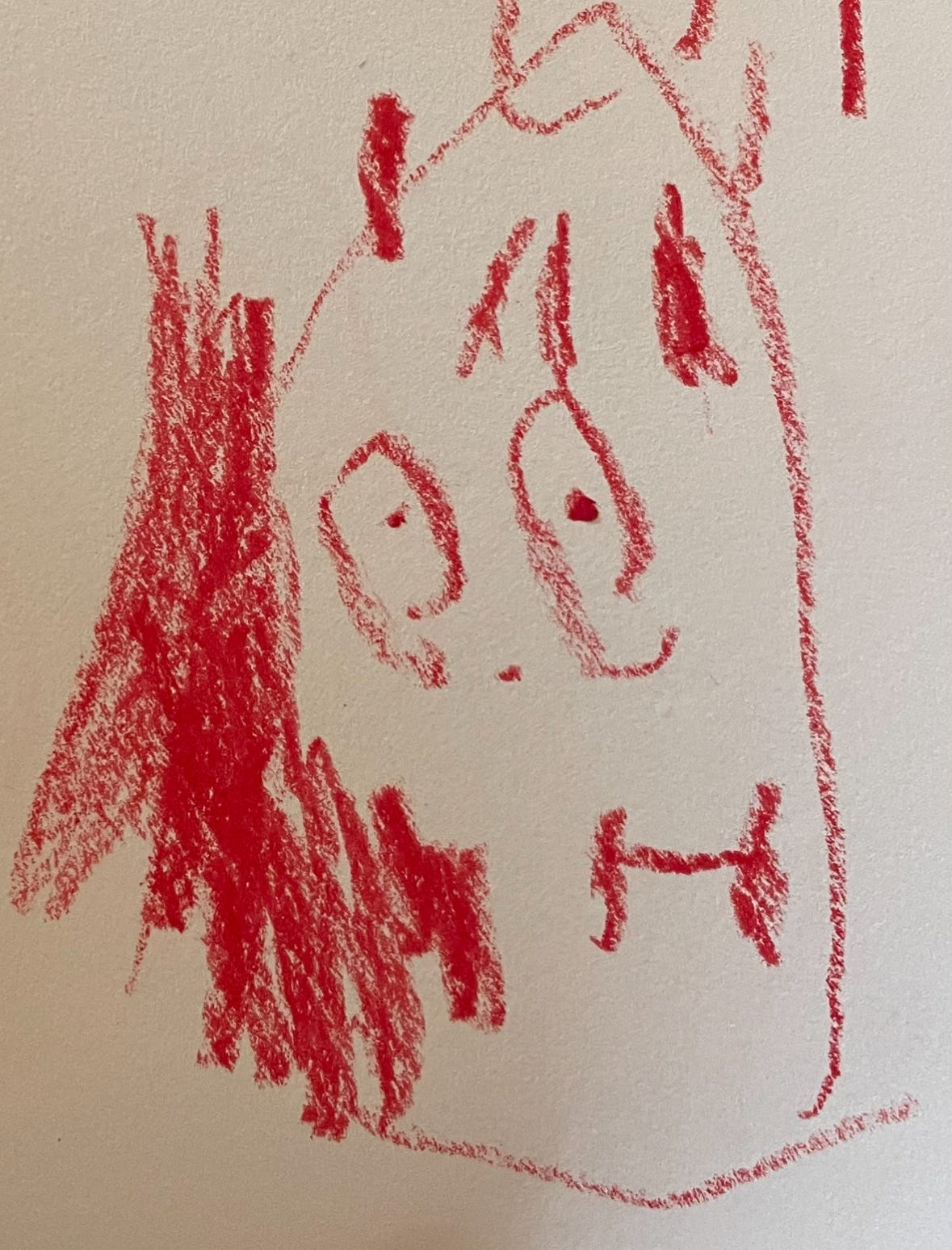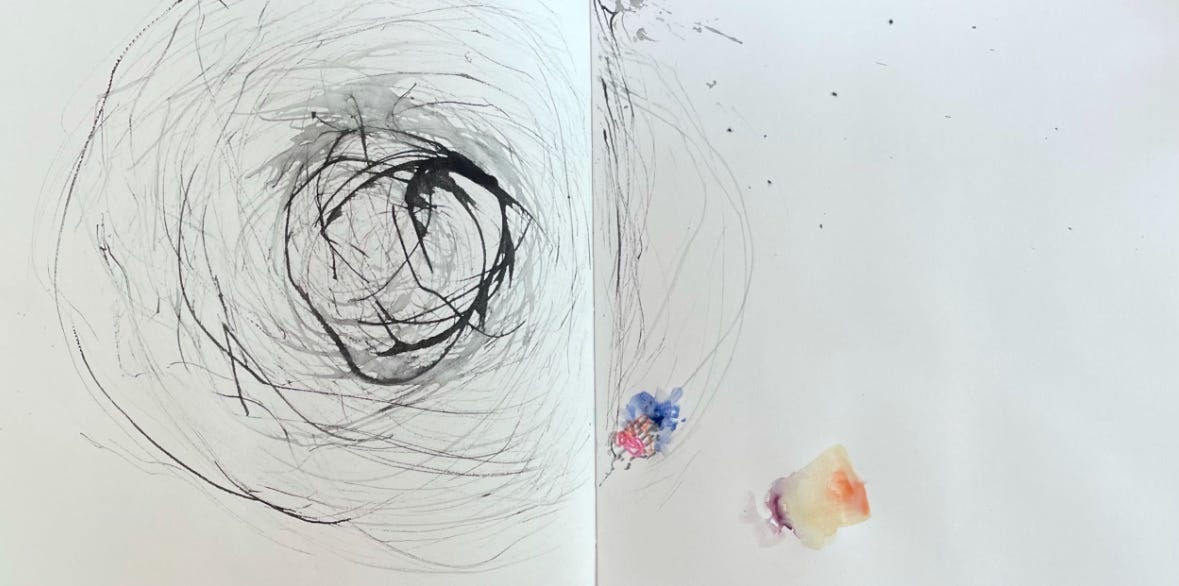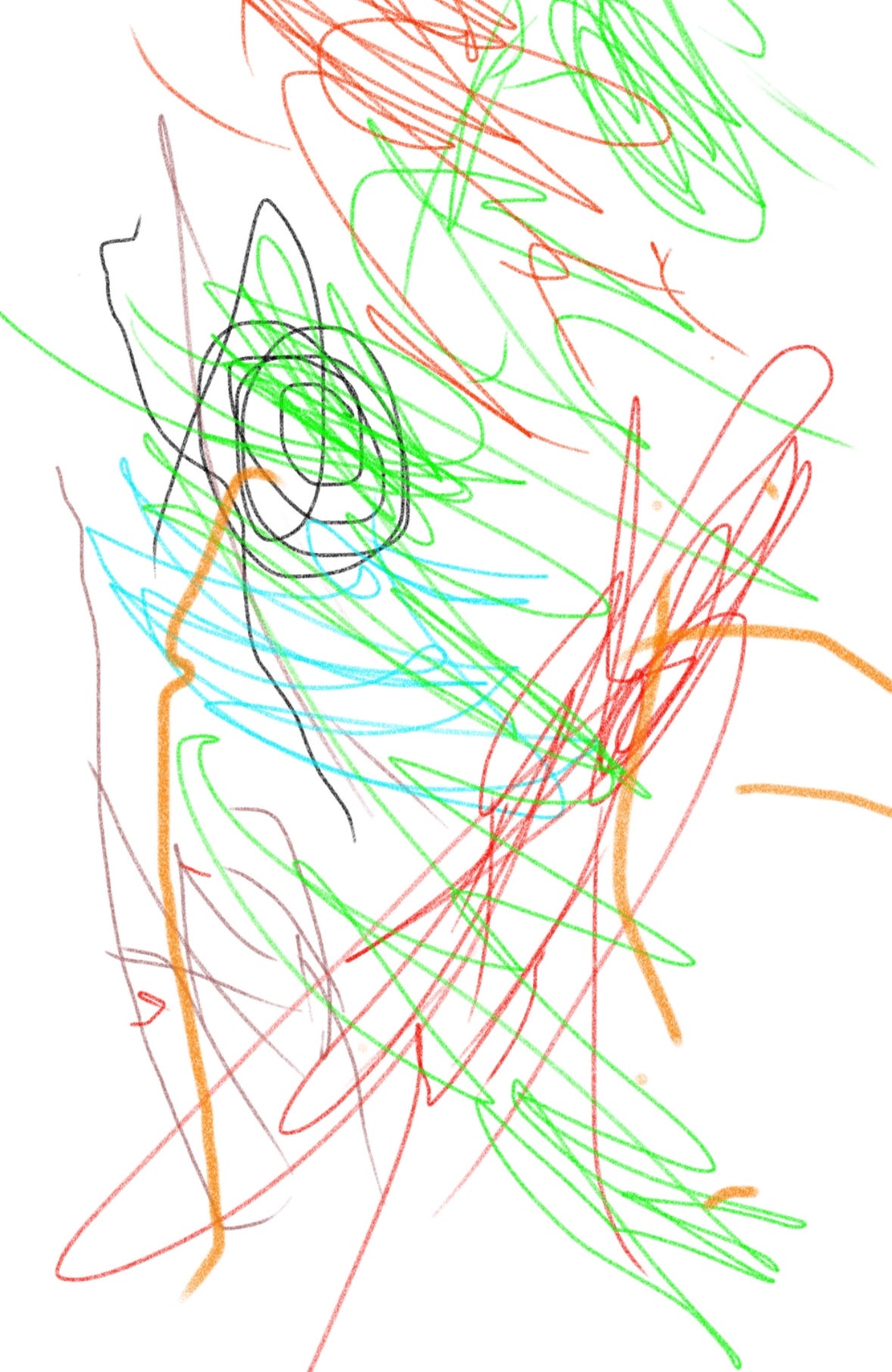Now and then I have this idea of making a bold statement for one of my classes on drawing: if you want to change the world, take this course an learn how to draw. While that may come off as a bit of false advertising, I know that there are many threads of truth in that statement. What would you think if I told you that within your home, right now, there are two very simple tools that can almost guarantee to lower your blood pressure; soothe your spirt, relieve anxiety, and sharpen your sense of perception; help you to discern the truth more readily in a world increasingly more cluttered with lies and deep fakes; and help you see the the ordinary world around you as extraordinary? And what if I told you that these two everyday staples in your home could have you creating beautiful drawings in about thirty minutes time? Seems a bit like hype and over-promising, hey?
Except, it really isn’t.
What are those two everyday items that we so often take for granted when they truly have the most magical of powers? A ordinary pencil and a piece of paper. What I hope to express in this essay (and others forthcoming) is how those two simple tools can be the antidote to the sense of overwhelm we can experience in our daily lives, but more than that, an opening to a more creative, grounded and expressive way of being in the world. It can make us happier, softer people—and that is a win/win for the entire universe. It is a big claim, I know, and I’d even say I promise, but I am not a big fan of promises in general. Whatever our situation may be at any given time, there is beauty hidden in it somewhere, and the act of seeing something and drawing what we see helps us to find that beauty.
So let’s talk about the elephant in the room—those of you who are thinking, “Pffft. I cannot even draw a stick figure!” You know how often I have heard this one over the decade or so I have been teaching people how to approach drawing? My response is always, “Well, why would you want to draw a stick figure? Let’s drawing something far more interesting than that.” I also usually say that I can prove them wrong, about not being able to draw, in a matter of minutes, if they will just give me a chance. And I can also say that I have never had someone walk away from that first experience feeling anything short of amazement at their natural ability to see something and mark it down on paper… and that my friends, is drawing. I am counting on my students who read this to comment about their own real-life experiences with drawing, just to back up my claims.

The self-doubt and negative thoughts we have about our own ability to draw are imposed upon us from a very early age. It is a shame, because drawing, for the human hand, is a natural and innate response to our environment. Drawing pre-dates human language in the scope of pre-history, and it is the first form of written expression for almost every human ever born. We are given a crayon and we get instant pleasure from the action of making marks on the paper before us. At first it doesn’t matter what our efforts are called, it is purely the act that resonates. At its most elemental gesture our first marks are a self-portrait of one human hand making a mark.
Eventually our young brains begin to reason and compare and have thought processes and our hands begin to mark down what we think. Mark-making becomes picture-making. “Here is a spider,” or “Here is my family and my house.” Our tiny hands begin to narrate our perceptions of the world around us and we have no idea that our attempts might not be representational in the adult sense of the word. “Here is mommy tucking me in for a nap.” We become storytellers on paper years before we can read or write—and, if we are lucky, our caregivers show non-judgemental glee and give encouragement to us for our efforts.
Soon enough we might be taught to write our name on our pictures, and, again, if we are lucky, we carry on creating without a care or judgement if it’s “good” or not. Then, we go to school, and we do begin to learn to read and write and sadly this is when it can begin to go wrong in the drawing realm for the majority of humans across time and continents. Mark-making and pure expressive narrative begins to move from a natural and whole body experience to the more cerebral realm of symbol making. “Oh, Katie, that isn’t quite a sun. Here, let me show you how to make the sun,” and the well-meaning adult draws us a circle with radiating spikes, and so we do, too. Grass become green lines, a pond becomes wavy blue lines with maybe a goldfish-cracker-shaped fish, houses are rectangles with square chimneys and smoke billowing forth in a squiggly line, and our people begin to take the form of those stick figures we like to talk about, representing what was before a much more complex expression of the the people in our lives.
Once we begin to go to school, we are often taught to copy what the teacher does, furthering our use of symbols, unless of course we are in a school that has no art instruction at all, increasingly the norm. Here is what is likely to happen: a very few children will carry on to the beat of their own artistic drum and if encouraged to do so soon become those special few labeled as the ones with “talent.” Most of us, though, leave it behind and begin to form that seed of idea in our minds that “I cannot even draw a stick figure.” As a teacher of drawing I can tell you that it is so rare to meet someone whose artistic efforts were encouraged as a child or young adult. I have heard so many stories of someone being told his or her drawings were stupid or bad and that they had better focus on more important things that will earn them money one day. What a loss that is for the developing human. What a shame that those pursuits for our spirits and sense of beauty are deemed not important if they won’t earn us a living.

It is my belief that drawing should be taught as a life skill with the same importance as learning to read, write, think scientifically and calculate numbers. It should be taught in every school at all grade levels, its own subject having nothing to do with arts and crafts, which I also believe must be a part of every education. It should also be taught from an observational perspective, from three-dimensional subjects right in front of us as we learn to slow down, override what our brain tells us and rely solely on what our eyes actually see. There is a profound benefit to the human brain when we learn to draw in this way, to see what is really right in front of us and to mark it down onto paper. And it is far easier than you can imagine. I invite you to try this free lesson on my YouTube channel, and let me know how you do. If you enjoy it, there are many more—just be in touch and I can guide you there.
John Ruskin, the 19th century art critic, artist and philosopher wrote: “I would rather teach drawing that my pupils may learn to love nature, than teach the looking at nature that they may learn to draw.” Learning to draw is learning to see. The more clearly we see something, the more time we spend studying it, the more we can find the wonder and beauty in it, and the more we begin to care about it. I’ll leave with that thought, but will pick up this thread again soon. For now… I invite you pick up a pencil, try my lesson., and draw.






KATERI!
Super insightful. Having been trained to teach art to kids, big yes to this distinction: from an *observational* perspective. No values placed.
"It is my belief that drawing should be taught as a life skill with the same importance as learning to read, write, think scientifically and calculate numbers. It should be taught in every school at all grade levels, its own subject having nothing to do with arts and crafts, which I also believe must be a part of every education. It should also be taught from an observational perspective, from three-dimensional subjects right in front of us as we learn to slow down, override what our brain tells us and rely solely on what our eyes actually see."
I wish I had kept drawing after childhood. They say that sports teach teamwork, problem solving and loyalty. Art teaches us patience, observation and technical skills for life. There’s problem solving and engineering. I agree that it should be taught as a regular course at least through middle school if not high school. 😍😍